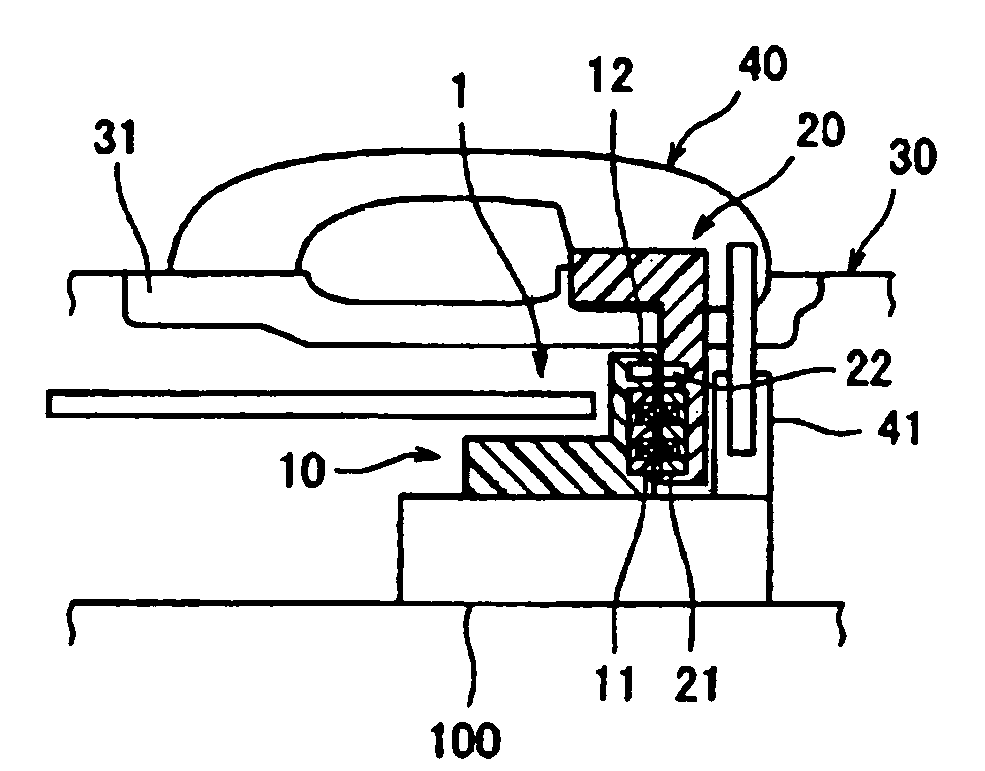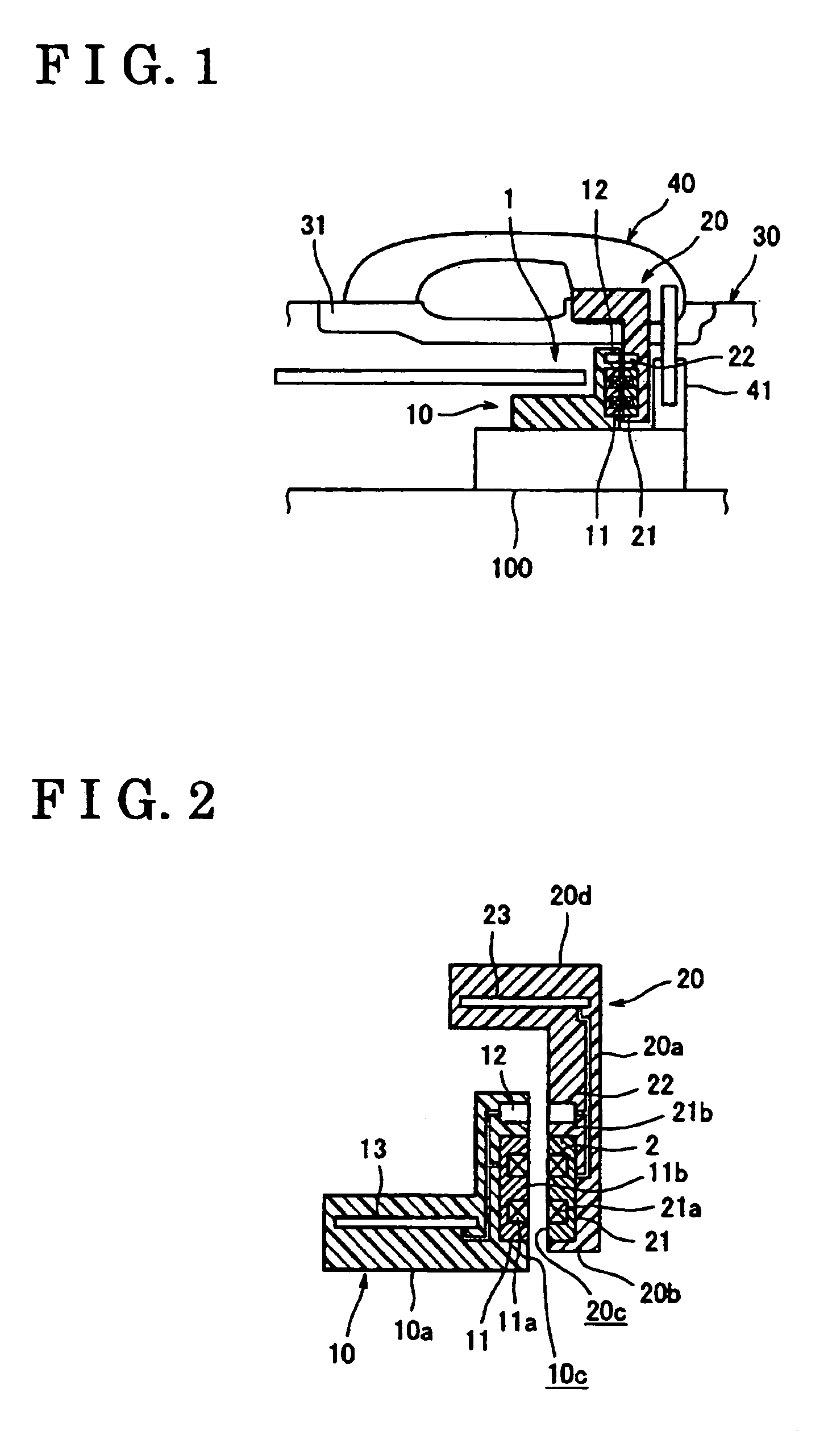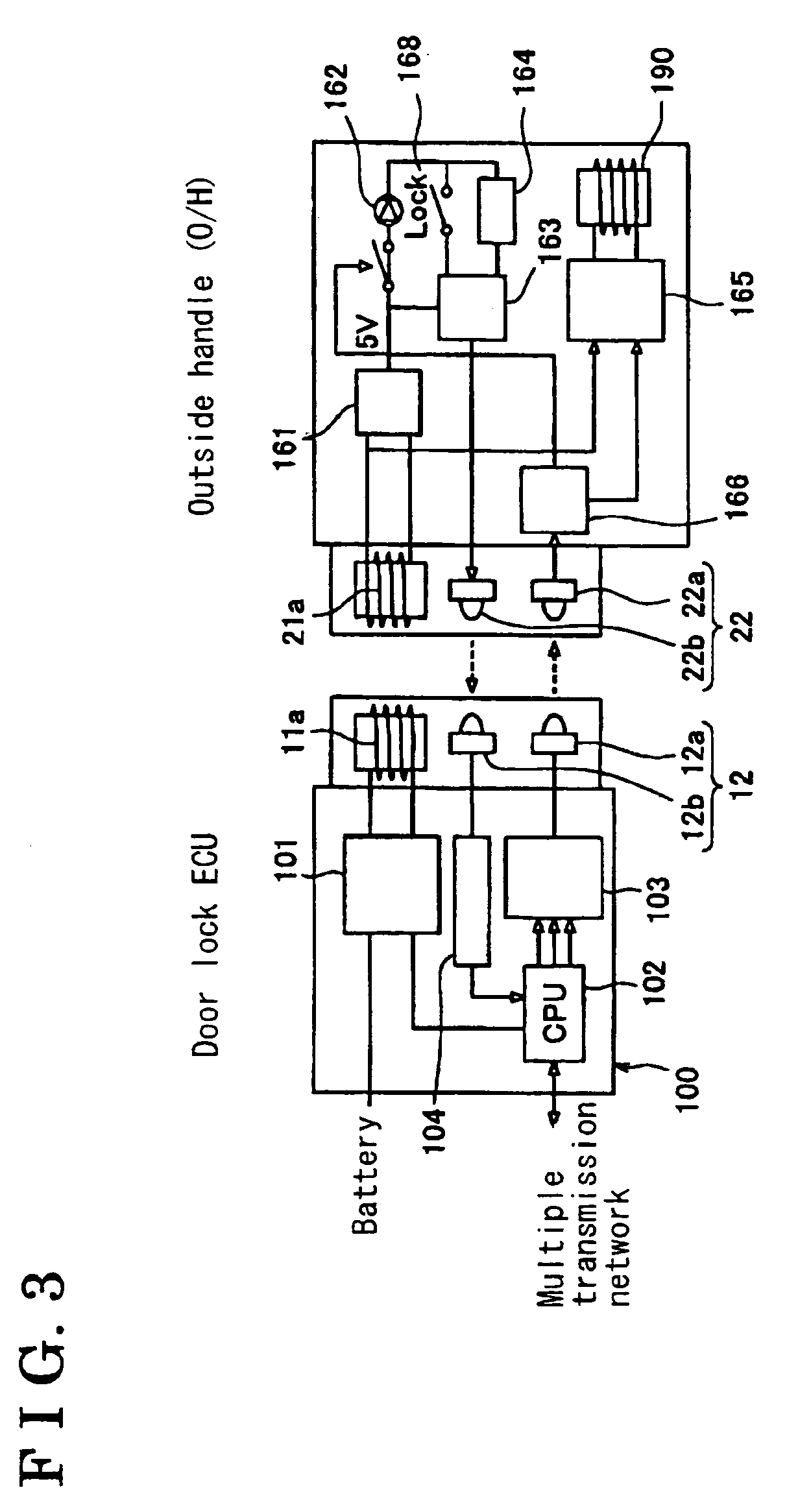Outside handle device for a vehicle door
- Summary
- Abstract
- Description
- Claims
- Application Information
AI Technical Summary
Problems solved by technology
Method used
Image
Examples
first embodiment
[0028]the present invention is explained referring to FIGS. 1 to 3.
[0029]As shown in FIG. 1, an outside handle device according to the first embodiment of the present invention includes a handle frame 31 of a door 30, an outside handle (handle main body) 40 built in the door 30 and a connector 1 for supplying electric power and transmitting signal between a vehicle body side and the outside handle side.
[0030]The connector 1 includes of a first connector 10 attached to the vehicle body side of the door 30 (door lock mechanism) and a second connector 20. The first connector 10 includes a coil core 11 for supplying electric power and a door-side infrared emitting / accepting device 12 (a vehicle body side signal transmission device). The second connector 20 includes a coil core 21 provided in the outside handle 40 for receiving the electric power and a handle-side infrared emitting / accepting device 22 (a handle side signal transmission device).
[0031]When the outside handle is attached to...
second embodiment
[0053]the present invention is explained referring to FIG. 4.
[0054]For the same composition which is equivalent to the first embodiment, the detailed description is omitted and corresponding number is put to FIG. 4.
[0055]As shown in FIG. 4(a), an outside handle device according to the second embodiment of the present invention includes a handle frame 231 of a door 230, an outside handle (handle main body) 240 built in the door 230, a door lock mechanism provided at a side of a vehicle and a connector 2 attached them. The connector 2 consists of a first connector 210 attached to vehicle body side of the door 230 (the door lock mechanism), a second connector 220 attached to the outside handle 240 and a secondary coil 281 lied between the first connector 210 and the second connector 220. The first connector 210 and the second connector 220 are placed as face to face. The distance between first connector 210 and the second connector is broader than that of the first embodiment, and a do...
PUM
 Login to View More
Login to View More Abstract
Description
Claims
Application Information
 Login to View More
Login to View More - R&D
- Intellectual Property
- Life Sciences
- Materials
- Tech Scout
- Unparalleled Data Quality
- Higher Quality Content
- 60% Fewer Hallucinations
Browse by: Latest US Patents, China's latest patents, Technical Efficacy Thesaurus, Application Domain, Technology Topic, Popular Technical Reports.
© 2025 PatSnap. All rights reserved.Legal|Privacy policy|Modern Slavery Act Transparency Statement|Sitemap|About US| Contact US: help@patsnap.com



